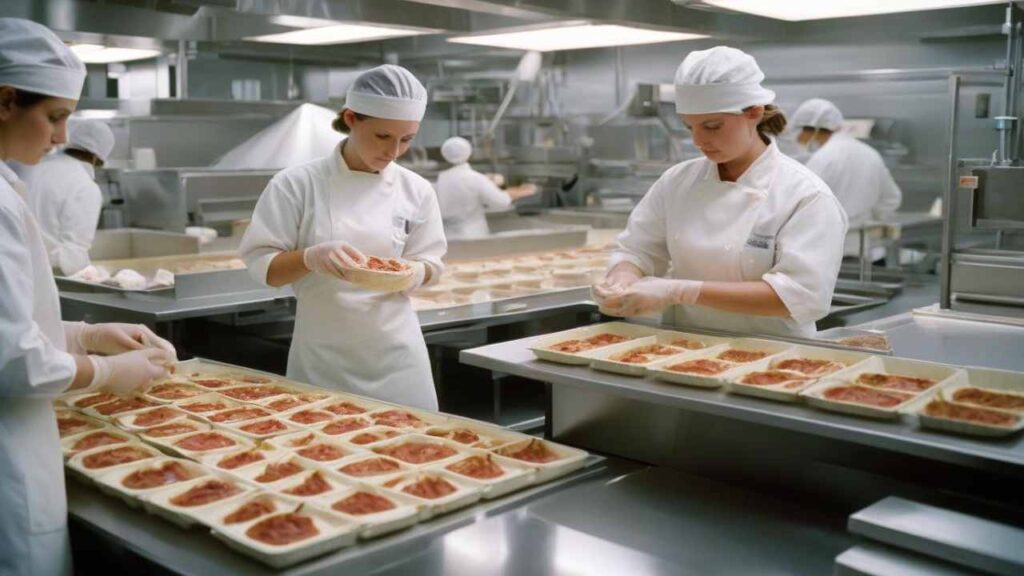Food safety is critical in the food industry. Whether you’re a restaurant owner, a culinary professional, or an aspiring chef, ensuring food is safe to consume isn’t just about government regulations—it’s about earning your customers’ trust. But what role do food workers play in maintaining these safety standards? How much of the onus lies on them, and what steps should they take to guarantee compliance?
This blog dives into the key responsibilities of food workers in maintaining food safety, common challenges they face, and actionable solutions to uphold the highest safety standards in any professional kitchen.
Why Food Workers Are Crucial to Food Safety

Food workers are on the front lines of food preparation and handling, making them the first and most critical line of defense against contamination and foodborne illnesses. Their actions directly impact the quality of food served to customers and the reputation of the food business they work for.
According to the CDC, approximately 48 million people in the United States suffer from foodborne illnesses annually. While foodborne risks can arise from external factors like contaminated produce, poor sanitary practices within kitchens significantly spread these illnesses. Proper involvement from food workers can substantially mitigate these risks.
Reasons Food Workers Are Integral
Direct Food Handling: Food workers frequently touch or prepare raw ingredients, making personal hygiene and awareness indispensable.
Observation and Reporting: Workers can spot early signs of contamination or improper handling techniques.
Nurturing Good Practices in Peers: Their food safety habits often influence the kitchen Team culture.
The most stringent food policies can only fall short with their proactive part staying strong.
Essential Responsibilities of Food Workers
Maintaining Personal Hygiene
The most straightforward actions can profoundly impact food safety. Food workers are responsible for maintaining hygiene while on duty.
Practices:
Hand Washing: Clean hands before handling food, using the restroom, or touching potentially contaminated surfaces.
Clean Uniforms: Keep personal uniforms clean and free from stains or potential contaminants.
Avoid Working While Ill: One of the most significant risks to food safety is sick staff preparing meals. Workers must report illnesses promptly to their supervisors.
Example:
An outbreak study in a catering business revealed that improper handwashing by food workers caused cross-contamination, leading to 53 cases of foodborne illness. Simple hygiene practices could have avoided this situation.
Following Proper Food Storage Guidelines
Incorrect storage is one of the major contributors to food spoilage and contamination. When food workers follow storage procedures, the risk of harmful bacteria growth is reduced.
Key Practices:
- Store perishable items at proper temperatures. Refrigerators should maintain temperatures below 40°F (4°C).
- Keep raw and ready-to-eat foods separate to avoid cross-contamination.
- Rotate inventory using FIFO (First-In, First-Out) principles to use older stock first.
Pro Tip:
A labeled and well-organized storage system enhances food safety and kitchen efficiency by making locating items more manageable.
Sanitizing and Cleaning Surfaces
Work surfaces and tools, such as knives and cutting boards, are hotspots for contamination due to repeated contact with various ingredients.
Key Steps:
- Clean surfaces with hot, soapy water before and after every use.
- Regularly sanitize equipment using commercial-grade solutions.
- Only reuse contested cleaning cloths with proper disinfecting.
Monitoring Cooking Temperatures
Improper cooking is a pivotal cause of foodborne illness. Food workers must ensure that all items are cooked thoroughly to the appropriate internal temperatures to destroy harmful pathogens.
Ideal Cooking Temperatures:
- Poultry: 165°F (74°C)
- Ground meats: 160°F (71°C)
- Fish and shellfish: 145°F (62°C)
A food thermometer is the best way to measure cooked foods’ internal temperature accurately.
Challenges Food Workers Face in Food Safety
While most food service professionals wish to uphold safety standards, practical challenges can hinder their efforts. By addressing these obstacles proactively, restaurant owners and management teams can create a safer kitchen environment.
Common Issues:
Time Pressures
During busy shifts, food workers often face pressure to prioritize speed over protocol, leading to lapses in safety practices. Training staff to incorporate quick yet efficient safety habits can counteract this.
Knowledge Gaps
Not all food workers possess proper education about food safety. Regular training sessions are essential to ensure all staff have updated knowledge about safety practices.
Lack of Proper Tools
Sometimes, food workers need access to tools like thermometers or cleaning solutions, so business owners must ensure their kitchens are well-equipped.
Complacency
Repetitive tasks may lead to complacency in safety protocols. Engaging workers through periodic evaluations and checkpoints can sustain motivation.
How Restaurant Owners Can Improve Food Worker Accountability
Owners and managers are vital in ensuring food workers are well-supported in maintaining food safety. Here’s how they can help:
Provide Comprehensive Training
Regular training programs on topics like hygiene, storage guidelines, and hazard prevention equip workers to make informed choices in the kitchen.
Suggested Topics for Training:
- Recognizing foodborne illnesses
- The importance of sanitization
- Using tools like thermometers effectively
Lead by Example
Managers and senior chefs should model the correct behavior. When food workers observe their leaders practicing proper safety habits, they are more likely to follow suit.
Encourage Open Communication
Workers should feel comfortable reporting concerns, such as faulty equipment or procedure lapses, without fear of reprisal. Transparent interactions help address issues promptly.
Conduct Regular Inspections
Frequent checks ensure that safety standards remain consistent. These inspections also serve as opportunities to provide constructive feedback to food workers.
Building a Food Safety Community
Another step toward effective food safety management is fostering a culture of shared responsibility. Encourage collaboration and teamwork when addressing safety protocols. Consider these activities to build a strong safety community among your staff:
- Hold monthly sessions to discuss safety practices.
- Celebrate workers who demonstrate exceptional adherence to food safety guidelines.
- Share successes and lessons learned with the entire Team.
Final Thoughts—The Key to Serving Safe and Delicious Food
Every meal starts with trust. Diners entrust food workers with their health every time they walk through the doors of a restaurant. Food workers play an irreplaceable role in ensuring that trust isn’t broken by avoiding practices contributing to contamination and foodborne illness.
Food workers and restaurant owners can create safer dining spaces and better culinary experiences by combining personal responsibility, training, and infrastructure.
Whether you’re a chef creating art in the kitchen or a business owner managing operations, prioritizing food safety is the best way to protect your reputation and keep your customers returning for seconds.










